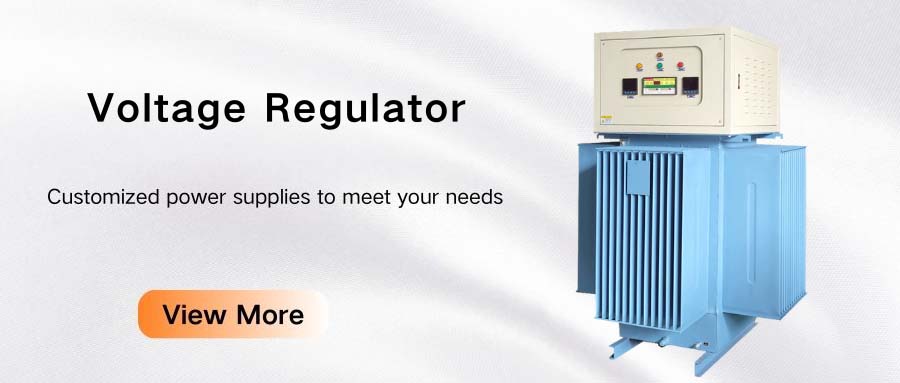It is very important to choose a suitable three-phase voltage regulator because it will directly affect the stability of the power system and the normal operation of the equipment. The three-phase voltage regulator is mainly used to adjust the fluctuation of the grid voltage so that it always remains within the set range. Here are several key factors to consider when choosing a suitable three-phase voltage regulator:
Load requirements
First, the load requirements of the required voltage regulator need to be determined. The load requirements include load power and load type. The load power indicates the maximum power demand that the voltage regulator needs to meet. The load type can be a single resistive load or a non-linear load such as a motor, transformer, etc. Non-linear loads have higher requirements for voltage regulators because they cause current fluctuations and harmonic pollution.
Stability requirements
The stability of the voltage regulator refers to the ability to stabilize the output voltage. The stability requirement is usually expressed as the fluctuation range or percentage of the output voltage. Different applications have different requirements for stability. Generally speaking, for precision instruments and equipment, the stability requirements of the voltage regulator will be higher.
Control method
There are many control methods for voltage regulators, such as relay control, open-loop control, and closed-loop control. Relay control is the simplest method, but it has low accuracy and is suitable for occasions where stability is not required. Open-loop control can adjust the output voltage according to the needs of the load, but it cannot monitor voltage fluctuations in real time. Closed-loop control is the most advanced control method, which can dynamically adjust the working state of the voltage regulator according to real-time input and output information, and has high stability and accuracy.
Efficiency and power factor
In addition to stability, the efficiency and power factor of the voltage regulator are also considerations. Efficiency represents the ratio between input power and output power. A high-efficiency voltage regulator can reduce energy waste. Power factor refers to the extent to which the voltage regulator can utilize and exhaust the electrical energy provided by the power supply system. The higher the power factor, the higher the efficiency of the voltage regulator.
Overload and short-circuit protection
When choosing a voltage regulator, you should also pay attention to whether it has overload and short-circuit protection functions. Overload protection can prevent the load from exceeding the rated capacity of the voltage regulator and being damaged, and short-circuit protection can prevent the circuit from being damaged due to short circuit.
In summary, the selection of a suitable three-phase voltage regulator should be based on factors such as load requirements, stability requirements, control methods, efficiency and power factor, as well as overload and short-circuit protection. When choosing, you can consult a professional engineer or supplier to ensure that you choose the voltage regulator that best suits your needs.






